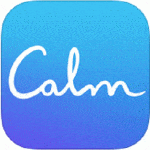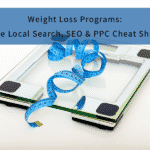Postcards are the silver bullet of direct mail. They’re comparatively cheap and almost always get at least a quick glance.Yet successful postcard marketing has unique and challenging requirements.You’ve got to capture the reader’s attention in no more than a second, maybe two – with a postcard that’s usually about 4″ x 6″!
Disappointed by your postcard marketing campaigns? Getting conflicting advice about how to make them pay off with new business?
This quiz helps you hit home runs on your next postcard initiative.
1. True/False: You can get new customers with postcards.
False. Winning over potential clients generally takes more information than you can – or should – squeeze onto a postcard.
Postcard campaigns are really best at lead generation – which is only Step 1 in the selling process. They’re a great way to generate interest from prospective clients and customers. And they’re an excellent vehicle for sending offers to your current customers – say, announcements of new services or programs.
You can also use postcards as quick thank-you notes, gift certifications or coupons, celebration of personal highlights like customer birthdays, and invitations to events ranging from private sales to speakers and more.
2. True/False: It’s cost-effective to send postcards to your entire mailing list.
True. But there’s a catch. Large print runs are often cheaper, so the average cost of a single postcard will often be much lower if you print thousands rather than hundreds.
However, you probably need to segment your mailing list to get the best response. A postcard designed for inactive clients shouldn’t be identical to a postcard that targets current customers, for example.
Mailing everyone on your list – when it’s perfectly obvious that many of the recipients won’t have any interest in the offer – just teaches them to ignore communications from your business. And an extremely poor response rate chips away at the financial benefit of a large print run.
3. True/False: A one-time postcard mailing is a good way to get started.
False. Don’t bother sending only one mailing. Plan on multiple mailings.
If you don’t have the budget to handle at least one mailing – either postal mail or e-mail – every four to six weeks for three to five months, choose a different marketing tactic. Repeated exposure is absolutely essential when you use direct mail marketing.
4. True/False: Your business name and logo should jump out to the reader.
False. You do need to include your business name and logo – but they shouldn’t dominate the postcard.
Your readers have extremely short attention spans – they’ll scan your postcard for only a second or two before deciding whether to toss it. Focus on answering WIIFM for your recipients – “What’s in it for me?” – by including an attention-grabbing headline and a few very short bullet points about the features or benefits that you’re offering them.
You’re also working with a very small amount of physical space even on an oversized postcard. So don’t waste it on a ludicrously large business name and logo.
5. True/False: Your postcard’s copy should be formal and businesslike.
False. Dry and formal language is rarely appropriate for health and wellness businesses.
Write in the same conversational tone that you’d use with your readers if you were talking to them in person. Yes, you’ll use a different tone for executives, say, than you would for consumers. But in both cases, avoid overly formal or persnickety language.
Use bullet-points and plenty of white space. Avoid long paragraphs and sentences, tiny fonts and excessive detail.
6. True/False: You should choose your best postcard concept and keep using it.
True. You should test several ideas, track results from each idea, and choose the one that actually produced the best results.
What works well from the customer’s view is often NOT what your management team or ad agency thinks will be most successful. So monitor the results from different concepts, and let those results drive your decision about which ones to keep using.
7. True/False: Great design makes or breaks postcard marketing.
True. But only when combined with a well-chosen mailing list, a strong offer or call to action tailored to recipients, and repeated mailings of well-tested concepts.
Adequate design is a necessary – but not sufficient – condition for an effective postcard marketing campaign. We’ve seen very effective postcards with mediocre creative elements – boring clip art graphics and poor use of color, for example. Great content can overcome lackluster design.
However, great creative design will never overcome mass mailings to every Tom, Dick and Harry of a poorly chosen offer or call to action.
8. True/False: Your postcard should give all the info needed to buy.
False. It’s just a postcard! It simply cannot do all your selling for you.
Use your postcard to get the reader’s attention and create some interest in finding out more about how your wellness business can help them. Focus on their goals or anxieties and on the benefits you can help them realize.
Then, make it easy for readers to follow up on their interest. Include multiple contact methods as appropriate for your business. Examples include your website, instant messaging userIDs, email, direct and tollfree phone numbers, fax, street address, and maps.
9. True/False: A subtle call to action is most effective.
False. Be clear and direct about what you want the reader to do.
Vague suggestions are NOT calls to action. Avoid things like “Stop by and say hi” or “Visit our website” or “Call for free consultation.” Notice that none of these answer the WIIFM question we described above.
Convert suggestions like these to a call to action by making them specific, time-sensitive and adding a customer benefit:
“Visit our website for free healthy summer BBQ recipes” or “Visit before Fri., 7/27 for tasty samples of GooGoo Juice.”




